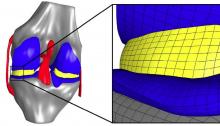Discovering Keys to Controlling Malaria
Malaria affected 219 million people around the globe in 2010, according to the World Health Organization. This life-threatening disease, caused by plasmodium parasites that are transmitted to people through the bites of infected mosquitoes, killed about 660,000 people in 2010 – mostly African children under the age of five.








